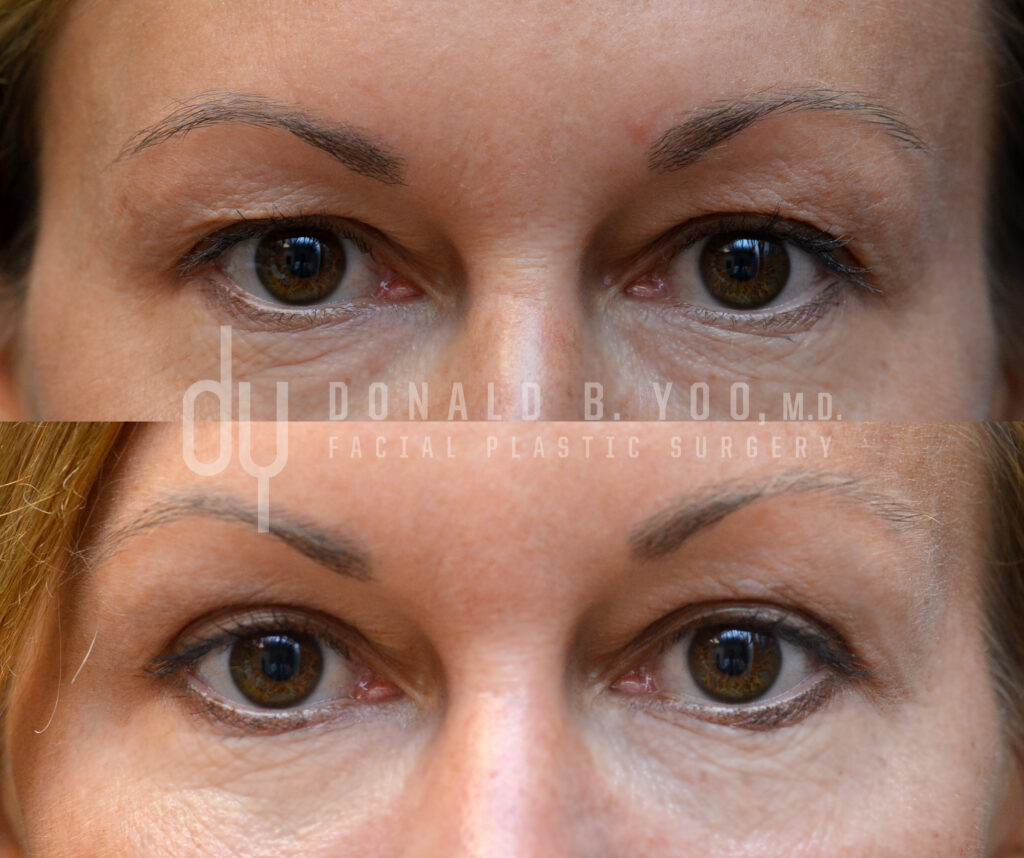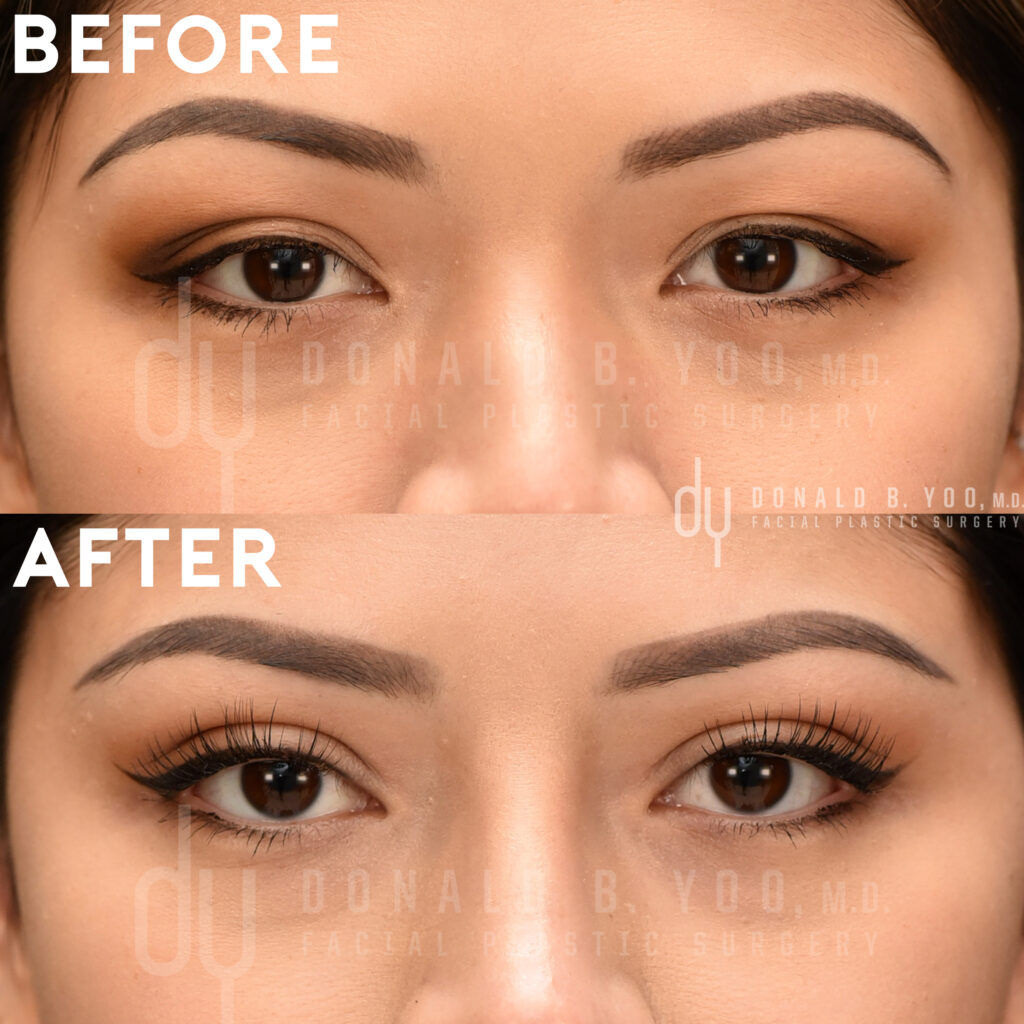Blepharoplasty refers to any surgery that reshapes the eyelid, while standard upper blepharoplasty and Asian upper blepharoplasty require different techniques owing to some anatomic differences unique to Asian eyelids. For a standard upper blepharoplasty procedure, excess skin (dermatochalasis) will cause sagging and droopiness of the upper eyelid, creating a tired and aged appearance. During upper blepharoplasty an incision or cut is made through the skin where the eyelid crease is, and the excess skin is removed. Occasionally excess fat between the upper eyelid and brow will be removed or repositioned to reshape the appearance of the upper eyelid sulcus, though this is performed in the minority of cases. Once excess skin, and occasionally excess fat, is appropriately addressed, the skin is closed. In contrast, during Asian blepharoplasty specific attention must be directed at re-establishing the connection between the tarsal plate and/or levator aponeurosis to the dermis of the skin. This connection is responsible for setting the height and shape of the upper eyelid crease and is created by a surgical technique called supratarsal fixation, during which the operating surgeon precisely anchors the crease at multiple points to establish this connection. It is during this phase the surgeon can create an infold, or tapered crease that meets the corner of the eye, or an outfold or parallel crease that runs parallel with the eyelid margin and allows for space between the upper eyelid crease and eyelid margin for the upper eyelid to show (where eye shadow would be applied).
See more at:
https://www.donyoomd.com/services-surgical-asian-blepharoplasty.php


 Contact Us
Contact Us